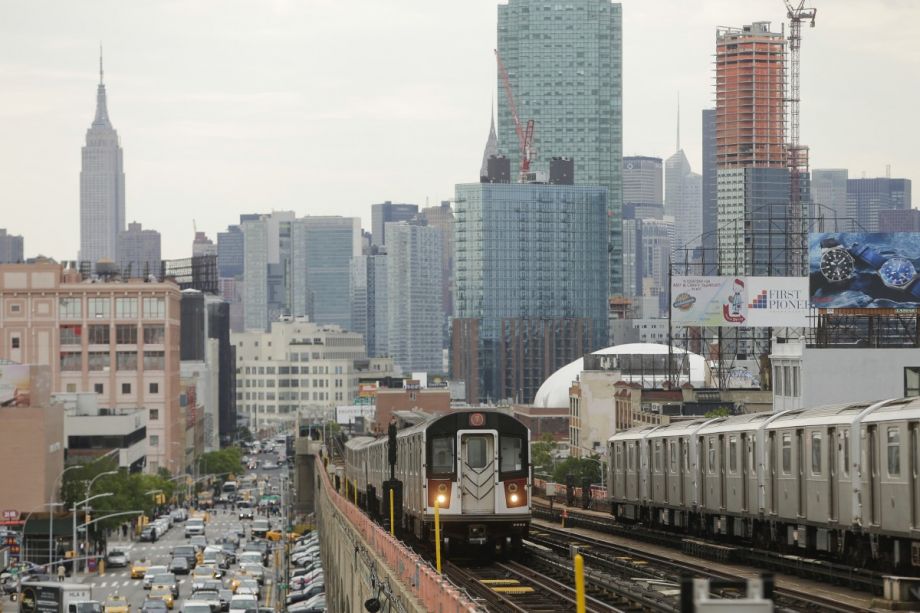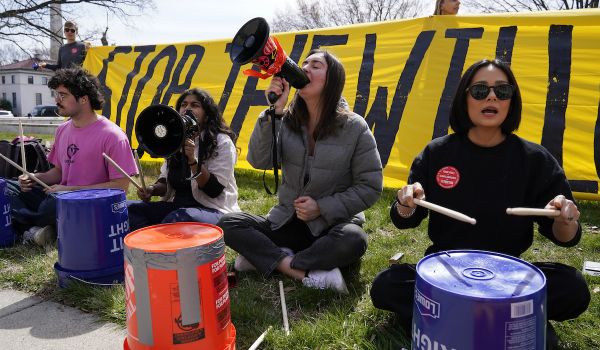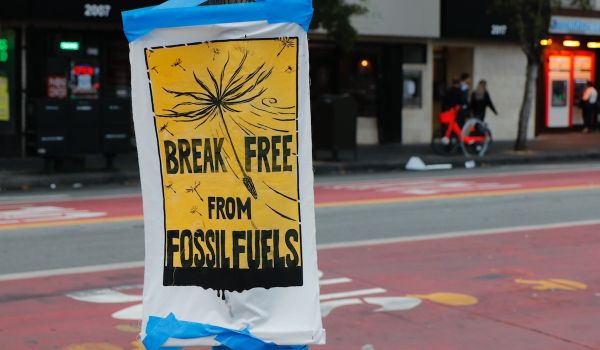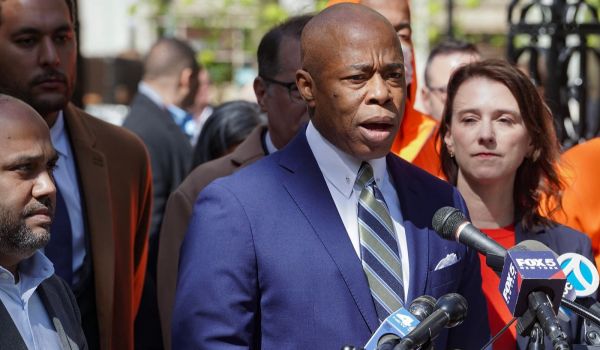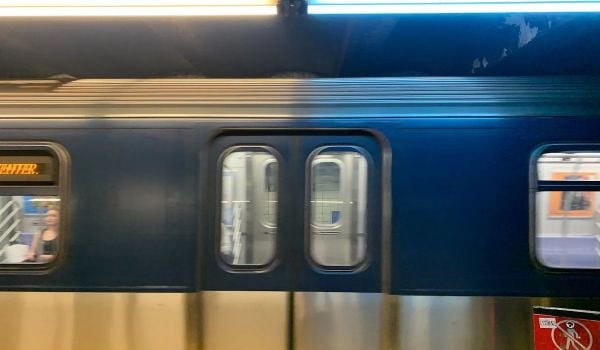Our weekly “New Starts” roundup of new and newsworthy transportation projects worldwide.
NYC Planners Propose Subway Line Just for the Boroughs
First the early-20th-century subway extensions, then the bridge complex. Now New York City’s metropolitan planning organization is floating another Triborough transportation proposal for the public’s consideration.
According to a report in the Queens Chronicle, this one, styled “Triboro,” involves a cross-Long Island commuter rail line from Co-op City in the Bronx to Bay Ridge in Brooklyn, describing an arc through the relatively rail-starved neighborhoods of central and southeast Queens along the way.
The Regional Plan Association’s proposed 24-mile line would utilize a freight rail line whose ownership is currently split between CSX and the Long Island Rail Road. In addition to its end neighborhoods, other major communities it would serve include Hunts Point in the Bronx, Astoria, Jackson Heights, Woodside, Middle Village and Glendale in Queens, and Ocean Hill, East New York, Flatbush, Midwood and Borough Park in Brooklyn.
The RPA has discussed this outer-borough crosstown route off and on over the last 20 years, but a report it issued this month has put the proposal into play. Its chief selling point: It would allow outer borough residents to travel between major activity centers faster without having to go through Manhattan or downtown Brooklyn first.
“Transit improvements are typically focused on moving people in and out of Manhattan,” the RPA said in its report. “Yet today, more New Yorkers commute within the outer boroughs than into Manhattan, and the city is gaining more jobs in Brooklyn, Queens, the Bronx and Staten Island than it is in the urban core.”
It’s getting a cool reaction in Queens, where the line would fill a large rail-free hole in the middle of the borough, though.
Larry Pener, former head of the Federal Transit Administration’s regional office and a Little Neck, Queens resident, criticized the proposal as not financially feasible anytime in the near future. He called RPA’s $2 billion cost estimate for building the line “fantasy” and added that it would most likely not be submitted for FTA funding, given that the Metropolitan Transportation Authority is already seeking a $500 million FTA New Starts grant for the Second Avenue subway.
Other Queens neighborhood representatives quoted in the story said that a light-rail line through southeast Queens or a reopening of the abandoned LIRR Rockaway Branch would provide better transit service to the borough’s central and southeast precincts.
Toronto on Track to Open Subway Into York
Canada’s oldest subway is set to extend beyond the boundaries of its largest city for the first time in its 63-year history.
Both Railway Gazette International and the International Railway Journal reported last week that track laying is complete for the Toronto-York Spadina Subway Extension, a completely underground extension of the Spadina leg of Line 1 Yonge-University from its current terminus at Downsview, to be renamed Sheppard West, to Vaughan Metropolitan Centre in the Regional Municipality of York.
Ontario Premier Kathleen Wynne visited the future Vaughan Metropolitan Centre station on June 6 to officially mark the completion of 17.6 total kilometers (10.8 miles) of track, including four sections of special track, for the 8.6-km (5.3-mile) Line 1 extension.
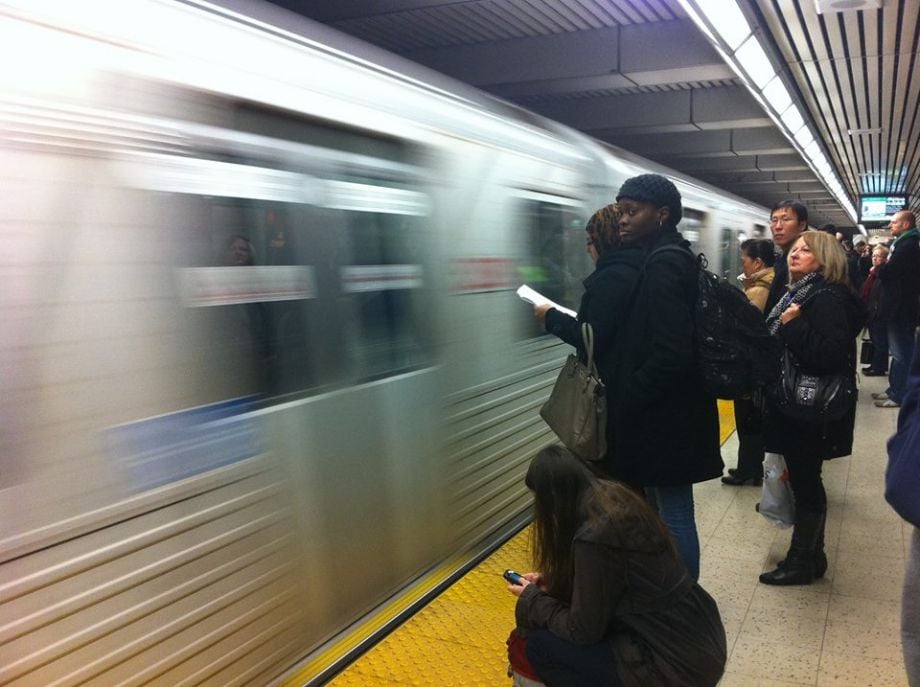
Passengers wait to board a Toronto subway. (Photo by Brenda Engberts Kaya via flickr)
The C$3.2 billion ($2.5 billion U.S.) extension is being paid for by the Canadian federal government (C$697 million / $543.6 million U.S.), the Ontario provincial government (C$870 million / $678.5 million U.S.), the city of Toronto (C$907 million / $707.4 million U.S.) and York Region (C$606 million / $472.6 million U.S.) The six-station extension is scheduled to open at the end of this year.
The first segment of Line 1 (formerly the Yonge-University-Spadina line) opened in 1954 from Eglinton Avenue in north Toronto to Union Station downtown via Yonge Street. An extension under University Avenue to St. George station opened in 1963, followed by extensions of the Yonge leg of the line to York Mills in 1973 and Finch in 1974. The University Avenue subway was extended along the right-of-way of the partially completed Spadina Expressway (now W. R. Allen Road) to Wilson station in 1978 and Downsview in 1996. The line is the second-busiest rapid transit line in North America, surpassed only by New York’s Lexington Avenue line.
Jakarta to Break Ground on LRT
An article in The Jakarta Post states that the formal groundbreaking for Jakarta’s new light-rail line is set to take place on the city’s 489th anniversary later this month.
Jakarta Governor Basuki “Ahok” Tjahaja Purnama is scheduled to turn the ceremonial first shovel of dirt for the line, whose first phase will run 6 km (3.7 miles) from Kelapa Gading in north Jakarta to the Velodrome in east Jakarta, one of the sites for the 2018 Asian Games. The projected construction cost is 4.4 trillion Indonesian rupees ($352 million U.S.)
According to the article, the city is expecting the LRT line to play a major role in transporting both athletes participating in the Games and visitors attending the events, as it will pass several Games venues.
The first phase is slated to open in time for the Asian Games, as is the larger, $1.7 billion mass rapid transit system already under construction.
Know of a project that should be featured in this column? Send a Tweet with links to @MarketStEl using the hashtag #newstarts.
The Works is made possible with the support of the Surdna Foundation.

Next City contributor Sandy Smith is the home and real estate editor at Philadelphia magazine. Over the years, his work has appeared in Hidden City Philadelphia, the Philadelphia Inquirer and other local and regional publications. His interest in cities stretches back to his youth in Kansas City, and his career in journalism and media relations extends back that far as well.
Follow Sandy .(JavaScript must be enabled to view this email address)


